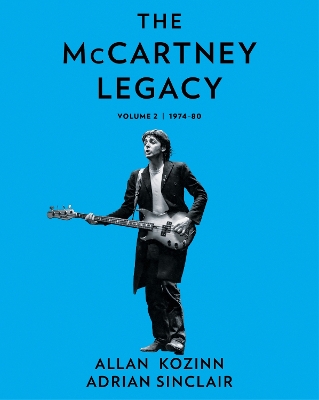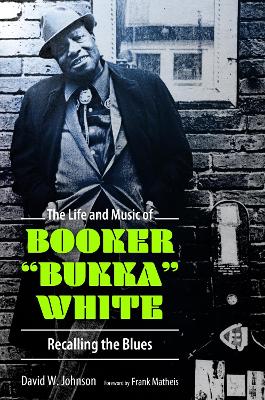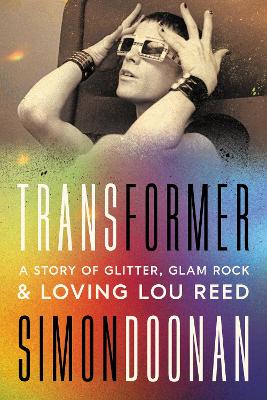Music of James Tenney
 portes grátis
portes grátis
Music of James Tenney
Volume 1: Contexts and Paradigms
Wannamaker, Robert
University of Illinois Press
12/2021
344
Dura
Inglês
9780252043673
15 a 20 dias
Descrição não disponível.
Preface xi
Conventions and Abbreviations xv
1. Introduction 1
1.1. A Summary Chronology 3
1.2. Aesthetic and Methodological Bases: Music in Sound 10
2. Early Works and Influences (1934-59) 18
2.1. Stan Brakhage and Interim (1952) 19
2.2. Manhattan and Meeting Carolee Schneemann 21
2.3. Lionel Nowak, Carl Ruggles, and Charles Ives's Concord Sonata 23
2.4. Seeds (1956/1961) 25
3. Tape Music and "Meta/-Hodos" (1959-61) 31
3.1. Lejaren Hiller and Harry Partch 31
3.2. The University of Illinois Electronic Music Studio 32
3.3. Collage #1 ("Blue Suede") (1961) 34
3.4. "Meta/-Hodos" (1961) 41
4. Computer Music and Ergodicity (1961-64) 48
4.1. Edgard Var?se, D'Arcy Thompson, and "Growth to Form" 51
4.2. John Cage, Variety, and Ergodicity 54
4.3. Max Mathews and MUSIC 59
4.4. The Acoustic Correlates of Timbre 62
4.5. Algorithmic Composition 63
4.6. Analog #1 (Noise Study) (1961) 68
4.7. Phases (1963) 76
5. Performance and the Social (1964-68) 83
5.1. Downtown in the 1960s 83
5.2. Tone Roads and an American Experimental Tradition 86
5.3. Fluxus and Friends 89
5.4. Carolee Schneemann, Antonin Artaud, Wilhelm Reich 93
5.5. Choreogram (1964) 97
5.6. Fabric for Che (1967) 101
6. Process and Continuity (1969-71) 110
6.1. Gradual Processes 112
6.2. For Ann (rising) (1969) 118
6.3. Postal Pieces (1965-71) 124
7. Interlude: Harmonic Theory 135
7.1. The Meaning of Harmony 137
7.2. The Harmonic Series 140
7.3. Interval Tolerance and "The Language of Ratios" 144
7.4. A History of Consonance and Dissonance 147
7.5. Roughness and Beating (CDC-5) 148
7.6. Toneness and Harmonicity (CDC-2) 149
7.7. Harmonic Space (CDC-1) 155
7.8. Harmonic Measures and Their Applications 165
8. Canons and the Harmonic Series (1972-79) 169
8.1. The Harmonic-Series Music 170
8.2. Clang (1972) 172
8.3. Spectral CANON for CONLON Nancarrow (1974) 176
8.4. Harmonium #1 (1976) 183
8.5. Three Indigenous Songs (1979) 189
9. Harmonic Spaces (1980-85) 193
9.1. The Harmonic-Space Music 193
9.2. Harmonium #3 (1980) 195
9.3. Bridge (1984) 199
9.4. Koan for String Quartet (1984) 216
10. Transition and Tradition (1986-94) 224
10.1. Critical Band (1988) 225
10.2. Flocking (1993) 231
11. Spectra and Diaphony (1994-2006) 237
11.1. Dissonant Counterpoint and Statistical Feedback 237
11.2. In a Large, . . . (1994-95) 241
11.3. Diaphonic Study (1997) 246
11.4. Arbor Vitae (2006) 250
12. A Tradition of Experimentation 259
Appendix A. Acoustics, Sensation, and Logarithmic Models 261
Appendix B. Spectrographic Analysis 265
Notes 271
References 301
Index 315
Conventions and Abbreviations xv
1. Introduction 1
1.1. A Summary Chronology 3
1.2. Aesthetic and Methodological Bases: Music in Sound 10
2. Early Works and Influences (1934-59) 18
2.1. Stan Brakhage and Interim (1952) 19
2.2. Manhattan and Meeting Carolee Schneemann 21
2.3. Lionel Nowak, Carl Ruggles, and Charles Ives's Concord Sonata 23
2.4. Seeds (1956/1961) 25
3. Tape Music and "Meta/-Hodos" (1959-61) 31
3.1. Lejaren Hiller and Harry Partch 31
3.2. The University of Illinois Electronic Music Studio 32
3.3. Collage #1 ("Blue Suede") (1961) 34
3.4. "Meta/-Hodos" (1961) 41
4. Computer Music and Ergodicity (1961-64) 48
4.1. Edgard Var?se, D'Arcy Thompson, and "Growth to Form" 51
4.2. John Cage, Variety, and Ergodicity 54
4.3. Max Mathews and MUSIC 59
4.4. The Acoustic Correlates of Timbre 62
4.5. Algorithmic Composition 63
4.6. Analog #1 (Noise Study) (1961) 68
4.7. Phases (1963) 76
5. Performance and the Social (1964-68) 83
5.1. Downtown in the 1960s 83
5.2. Tone Roads and an American Experimental Tradition 86
5.3. Fluxus and Friends 89
5.4. Carolee Schneemann, Antonin Artaud, Wilhelm Reich 93
5.5. Choreogram (1964) 97
5.6. Fabric for Che (1967) 101
6. Process and Continuity (1969-71) 110
6.1. Gradual Processes 112
6.2. For Ann (rising) (1969) 118
6.3. Postal Pieces (1965-71) 124
7. Interlude: Harmonic Theory 135
7.1. The Meaning of Harmony 137
7.2. The Harmonic Series 140
7.3. Interval Tolerance and "The Language of Ratios" 144
7.4. A History of Consonance and Dissonance 147
7.5. Roughness and Beating (CDC-5) 148
7.6. Toneness and Harmonicity (CDC-2) 149
7.7. Harmonic Space (CDC-1) 155
7.8. Harmonic Measures and Their Applications 165
8. Canons and the Harmonic Series (1972-79) 169
8.1. The Harmonic-Series Music 170
8.2. Clang (1972) 172
8.3. Spectral CANON for CONLON Nancarrow (1974) 176
8.4. Harmonium #1 (1976) 183
8.5. Three Indigenous Songs (1979) 189
9. Harmonic Spaces (1980-85) 193
9.1. The Harmonic-Space Music 193
9.2. Harmonium #3 (1980) 195
9.3. Bridge (1984) 199
9.4. Koan for String Quartet (1984) 216
10. Transition and Tradition (1986-94) 224
10.1. Critical Band (1988) 225
10.2. Flocking (1993) 231
11. Spectra and Diaphony (1994-2006) 237
11.1. Dissonant Counterpoint and Statistical Feedback 237
11.2. In a Large, . . . (1994-95) 241
11.3. Diaphonic Study (1997) 246
11.4. Arbor Vitae (2006) 250
12. A Tradition of Experimentation 259
Appendix A. Acoustics, Sensation, and Logarithmic Models 261
Appendix B. Spectrographic Analysis 265
Notes 271
References 301
Index 315
Este título pertence ao(s) assunto(s) indicados(s). Para ver outros títulos clique no assunto desejado.
algorithmic composition; Alison Knowles; Bell Labs; Bell Telephone Laboratories; Brakhage; CalArts; California Institute of the Arts; Charles Seeger; computer music; consonance; DAEArcy Thompson; dissonant counterpoint; electronic music; experimental music; Fluxus; George Brecht; gestalt; harmonic series; harmonic space; harmony; Partch; Ives; John Cage; just intonation; Max Mathews; microtonal; minimalism; music analysis; Philip Corner; plunderphonics; process music; psychoacoustics; Ruth Crawford; sampling; Schneemann; spectral music; stochastic; tonnetz; VarFse; music theory; musical form; reference; music history; composers; musical examples
Preface xi
Conventions and Abbreviations xv
1. Introduction 1
1.1. A Summary Chronology 3
1.2. Aesthetic and Methodological Bases: Music in Sound 10
2. Early Works and Influences (1934-59) 18
2.1. Stan Brakhage and Interim (1952) 19
2.2. Manhattan and Meeting Carolee Schneemann 21
2.3. Lionel Nowak, Carl Ruggles, and Charles Ives's Concord Sonata 23
2.4. Seeds (1956/1961) 25
3. Tape Music and "Meta/-Hodos" (1959-61) 31
3.1. Lejaren Hiller and Harry Partch 31
3.2. The University of Illinois Electronic Music Studio 32
3.3. Collage #1 ("Blue Suede") (1961) 34
3.4. "Meta/-Hodos" (1961) 41
4. Computer Music and Ergodicity (1961-64) 48
4.1. Edgard Var?se, D'Arcy Thompson, and "Growth to Form" 51
4.2. John Cage, Variety, and Ergodicity 54
4.3. Max Mathews and MUSIC 59
4.4. The Acoustic Correlates of Timbre 62
4.5. Algorithmic Composition 63
4.6. Analog #1 (Noise Study) (1961) 68
4.7. Phases (1963) 76
5. Performance and the Social (1964-68) 83
5.1. Downtown in the 1960s 83
5.2. Tone Roads and an American Experimental Tradition 86
5.3. Fluxus and Friends 89
5.4. Carolee Schneemann, Antonin Artaud, Wilhelm Reich 93
5.5. Choreogram (1964) 97
5.6. Fabric for Che (1967) 101
6. Process and Continuity (1969-71) 110
6.1. Gradual Processes 112
6.2. For Ann (rising) (1969) 118
6.3. Postal Pieces (1965-71) 124
7. Interlude: Harmonic Theory 135
7.1. The Meaning of Harmony 137
7.2. The Harmonic Series 140
7.3. Interval Tolerance and "The Language of Ratios" 144
7.4. A History of Consonance and Dissonance 147
7.5. Roughness and Beating (CDC-5) 148
7.6. Toneness and Harmonicity (CDC-2) 149
7.7. Harmonic Space (CDC-1) 155
7.8. Harmonic Measures and Their Applications 165
8. Canons and the Harmonic Series (1972-79) 169
8.1. The Harmonic-Series Music 170
8.2. Clang (1972) 172
8.3. Spectral CANON for CONLON Nancarrow (1974) 176
8.4. Harmonium #1 (1976) 183
8.5. Three Indigenous Songs (1979) 189
9. Harmonic Spaces (1980-85) 193
9.1. The Harmonic-Space Music 193
9.2. Harmonium #3 (1980) 195
9.3. Bridge (1984) 199
9.4. Koan for String Quartet (1984) 216
10. Transition and Tradition (1986-94) 224
10.1. Critical Band (1988) 225
10.2. Flocking (1993) 231
11. Spectra and Diaphony (1994-2006) 237
11.1. Dissonant Counterpoint and Statistical Feedback 237
11.2. In a Large, . . . (1994-95) 241
11.3. Diaphonic Study (1997) 246
11.4. Arbor Vitae (2006) 250
12. A Tradition of Experimentation 259
Appendix A. Acoustics, Sensation, and Logarithmic Models 261
Appendix B. Spectrographic Analysis 265
Notes 271
References 301
Index 315
Conventions and Abbreviations xv
1. Introduction 1
1.1. A Summary Chronology 3
1.2. Aesthetic and Methodological Bases: Music in Sound 10
2. Early Works and Influences (1934-59) 18
2.1. Stan Brakhage and Interim (1952) 19
2.2. Manhattan and Meeting Carolee Schneemann 21
2.3. Lionel Nowak, Carl Ruggles, and Charles Ives's Concord Sonata 23
2.4. Seeds (1956/1961) 25
3. Tape Music and "Meta/-Hodos" (1959-61) 31
3.1. Lejaren Hiller and Harry Partch 31
3.2. The University of Illinois Electronic Music Studio 32
3.3. Collage #1 ("Blue Suede") (1961) 34
3.4. "Meta/-Hodos" (1961) 41
4. Computer Music and Ergodicity (1961-64) 48
4.1. Edgard Var?se, D'Arcy Thompson, and "Growth to Form" 51
4.2. John Cage, Variety, and Ergodicity 54
4.3. Max Mathews and MUSIC 59
4.4. The Acoustic Correlates of Timbre 62
4.5. Algorithmic Composition 63
4.6. Analog #1 (Noise Study) (1961) 68
4.7. Phases (1963) 76
5. Performance and the Social (1964-68) 83
5.1. Downtown in the 1960s 83
5.2. Tone Roads and an American Experimental Tradition 86
5.3. Fluxus and Friends 89
5.4. Carolee Schneemann, Antonin Artaud, Wilhelm Reich 93
5.5. Choreogram (1964) 97
5.6. Fabric for Che (1967) 101
6. Process and Continuity (1969-71) 110
6.1. Gradual Processes 112
6.2. For Ann (rising) (1969) 118
6.3. Postal Pieces (1965-71) 124
7. Interlude: Harmonic Theory 135
7.1. The Meaning of Harmony 137
7.2. The Harmonic Series 140
7.3. Interval Tolerance and "The Language of Ratios" 144
7.4. A History of Consonance and Dissonance 147
7.5. Roughness and Beating (CDC-5) 148
7.6. Toneness and Harmonicity (CDC-2) 149
7.7. Harmonic Space (CDC-1) 155
7.8. Harmonic Measures and Their Applications 165
8. Canons and the Harmonic Series (1972-79) 169
8.1. The Harmonic-Series Music 170
8.2. Clang (1972) 172
8.3. Spectral CANON for CONLON Nancarrow (1974) 176
8.4. Harmonium #1 (1976) 183
8.5. Three Indigenous Songs (1979) 189
9. Harmonic Spaces (1980-85) 193
9.1. The Harmonic-Space Music 193
9.2. Harmonium #3 (1980) 195
9.3. Bridge (1984) 199
9.4. Koan for String Quartet (1984) 216
10. Transition and Tradition (1986-94) 224
10.1. Critical Band (1988) 225
10.2. Flocking (1993) 231
11. Spectra and Diaphony (1994-2006) 237
11.1. Dissonant Counterpoint and Statistical Feedback 237
11.2. In a Large, . . . (1994-95) 241
11.3. Diaphonic Study (1997) 246
11.4. Arbor Vitae (2006) 250
12. A Tradition of Experimentation 259
Appendix A. Acoustics, Sensation, and Logarithmic Models 261
Appendix B. Spectrographic Analysis 265
Notes 271
References 301
Index 315
Este título pertence ao(s) assunto(s) indicados(s). Para ver outros títulos clique no assunto desejado.
algorithmic composition; Alison Knowles; Bell Labs; Bell Telephone Laboratories; Brakhage; CalArts; California Institute of the Arts; Charles Seeger; computer music; consonance; DAEArcy Thompson; dissonant counterpoint; electronic music; experimental music; Fluxus; George Brecht; gestalt; harmonic series; harmonic space; harmony; Partch; Ives; John Cage; just intonation; Max Mathews; microtonal; minimalism; music analysis; Philip Corner; plunderphonics; process music; psychoacoustics; Ruth Crawford; sampling; Schneemann; spectral music; stochastic; tonnetz; VarFse; music theory; musical form; reference; music history; composers; musical examples







